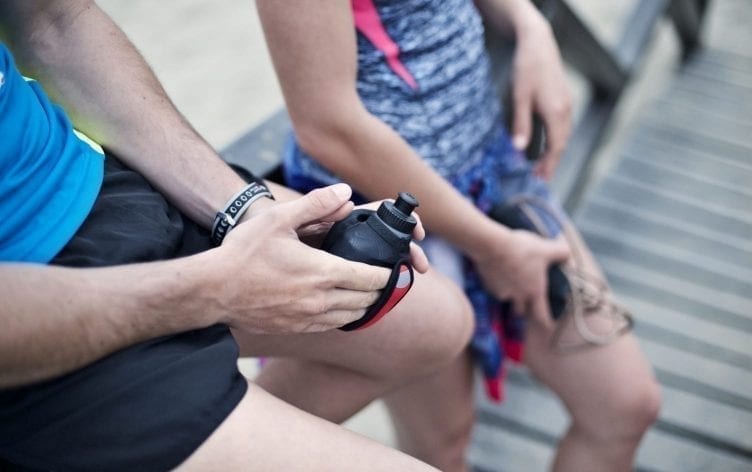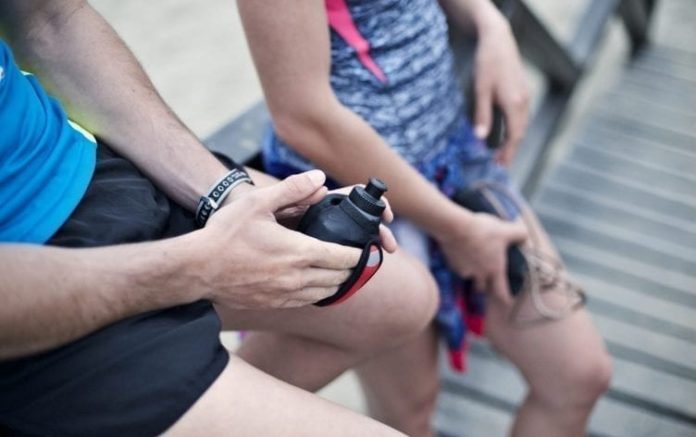
It’s always important to stay hydrated, but even more so when you’re walking for exercise. Drinking water helps your heart pump efficiently, keeps your muscles from cramping and better regulates your body temperature.
What’s more, your hydration needs may ramp up during hot weather, when heat and humidity mean you’ll be sweating more than usual. Here, experts share their best hydration advice for walks on steamy summer days:
1
LET THIRST BE YOUR GUIDE
“Don’t believe the myth that when you’re thirsty, you’re already dehydrated and it’s too late to fix the problem,” says Tamara Hew-Butler, DPM, PhD, associate professor of exercise and sport science at Wayne State University in Detroit. “If it were true, then all land mammals would be dead, because they drink according to the physiologically mediated dictates of behavioral-driven thirst. They have survived quite well without setting a timer which reminds them to drink at routine intervals or trying to calculate their rate of fluid loss while grazing.”
Hydration needs are based on factors like height and weight, how much you sweat, the temperature outside and the length of your walk. There’s no exact amount of liquid that’s right for everyone. Instead,“thirst is the best individualized fluid-replacement guide. It’s regulated in real time by neural circuits that are hard-wired into our brains and nervous system. There are sensors located in our brains which are continuously monitoring the balance between water and salt in the body.”
2
GIVE YOUR WATER A FLAVORFUL TWIST
Walking for an hour isn’t so strenuous activity that you’ll need to replenish your electrolytes with a sports drink, even on a hot summer day, water is an ideal choice. But if you hate drinking water, bring along something more palatable, like fruit-infused water, to ensure you’ll actually hydrate while walking.
“For healthy, recreational exercisers undertaking relatively low-intensity exercise such as walking for short-to-medium durations, drinking water is perfectly appropriate,” says hydration researcher Gethin Evans, PhD, principal lecturer at Manchester Metropolitan University in the U.K. “[But] perhaps one of the most important factors that needs to be considered is the taste of the fluid used. The nicer it tastes, the more people will ingest.”
3
EXPECT FEWER PIT STOPS
Don’t deprive yourself of a drink when you’re thirsty because you’re worried you’ll have to use the bathroom while you’re out walking; this could lead to dehydration. Your body helps you manage this potential problem by decreasing your urge to pee while you’re out in the heat.
“If it is hot and you’re sweating a lot, the body limits urine excretion by stimulating an antidiuretic hormone which serves to retain water at the kidneys,” Hew-Butler says. “So the more you sweat, the less you pee, and that’s normal.”
4
BEGIN WELL-HYDRATED
Don’t start walking on a hot day if you’re thirsty. Drink to satisfy your thirst about half an hour before you plan to walk. “Ingested water has to be emptied from the stomach and absorbed from the intestine before it enters the circulation,” Evans says. “Alleviating thirst immediately before starting exercise doesn’t mean that water levels have been restored; it may take up to 20 minutes for that water to appear in the circulation.”
5
BRING YOUR WATER BOTTLE
Even if you grab a drink at home before you leave, you should drink to satisfy your thirst while walking during hot weather. Bring along a big enough bottle to keep your thirst quenched. “For most people, that won’t be more than one 32-ounce water bottle per hour,” says Dr. Martin D. Hoffman, professor of physical medicine and rehabilitation at the University of California, Davis, and founder of the Ultra Sports Science Foundation in Sacramento. “If adequately hydrated at the start of a hour-long walk, you won’t get severely dehydrated, even if you don’t sip during that walk. But bringing a water bottle along will allow one to satisfy thirst, which is the key to maintaining proper hydration.”
6
REASSESS YOUR NEEDS POST-WALK
You may not feel thirsty at the end of your walk, especially if you’ve been drinking while you were out. If you aren’t thirsty, don’t force yourself to drink. Again, base your hydration needs on your thirst.
“If someone has been ingesting fluid during exercise when they are thirsty, then there is little need for an aggressive rehydration strategy when they get home,” Evans says. “We have some well-developed mechanisms for ensuring daily fluid balance is adequately maintained, so after completing this type of exercise, the water that will be ingested when someone is thirsty, combined with the water that will be ingested from food, will likely be sufficient.”
7
DRINK IT, DON’T WEAR IT
“You want to drink the water; you don’t want to pour it over your head,” says Amy Kimberlain, RD, a Florida-based spokesperson for the Academy of Nutrition and Dietetics. “You may think spritzing yourself will cool you down, but the only way to rehydrate and cool yourself from the inside out is by drinking plenty of water.”







